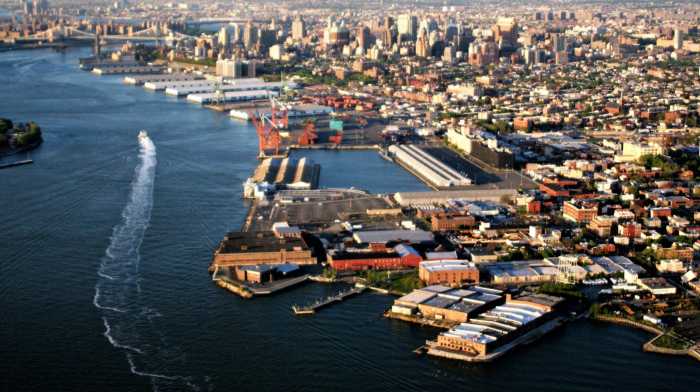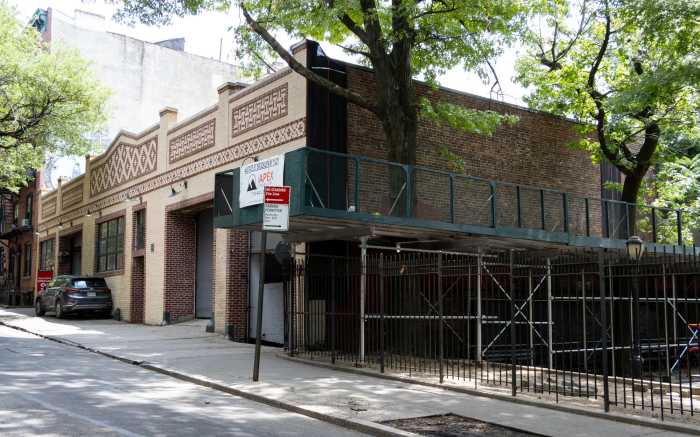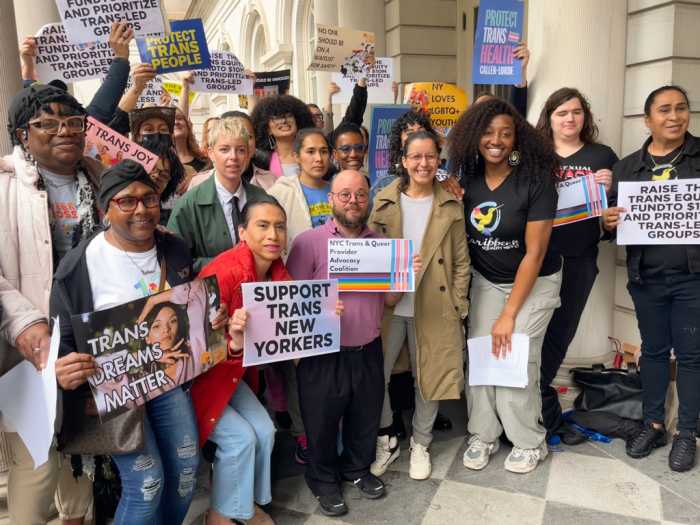Thousands of affordable housing units — including some of the 2,250 rentals that Bruce Ratner promised to included in his Atlantic Yards mega-development — will not be built due to a huge shortfall in federal subsidies available for low-cost housing creation, The Brooklyn Paper has learned.
It would take between $6 and $7 billion in federal grants to build all the proposed affordable units in all of the pending projects in the state — roughly five times more money than is available, according to Mike Slattery, the senior vice president at the Real Estate Board of New York.
Indeed, in 2007, the feds only granted $1.6 billion in such bonds — and those numbers won’t change significantly in 2008.
“There’s a lot more demand for affordable housing projects these days and there’s not enough money available,” said Joe Chan, the president of the Downtown Brooklyn Partnership, the quasi-governmental group that oversees the redevelopment of the long-languishing area bounded by Tillary, Fulton and Jay streets and Flatbush Avenue Extension.
“We’re at risk of seeing less affordable housing than” originally planned, he continued.
The trouble is most worrisome to supporters of Atlantic Yards, the 16-skyscraper-and-arena project, whose main selling point was its proposed 2,250 units of below-market-rate housing. To finance those units, Ratner will need $1.4 billion in subsidies over several years, according to state documents.
And that money is not available, experts say.
“It’s highly unlikely Forest City Ratner will be able to get the amount of subsidies that would go with the amount of affordable housing,” said Councilman David Yassky (D–Brooklyn Heights).
Forest City Ratner did not respond to a request for comment about how it would line up financing for its affordable housing units given that other developers are having such difficulty getting these coveted loans.
Then again, the developer has approached neither the city nor the state about affordable housing bonds. Most developers have already held such talks at this stage in the process, experts said.
Although Ratner hasn’t even applied for the money, the president of the city’s Housing Development Corporation says he’s not worried about Atlantic Yards.
“Given the scale of the project … we’re not concerned that the money won’t be there,” Marc Jahr told The Post last week.
But insiders say the scale of Atlantic Yards is exactly the problem in a down market.
“Forest City Ratner sold its Atlantic Yards project to elected officials on its promise of ‘affordable’ housing,” said Daniel Goldstein, spokesman for the anti-Yards group, Develop Don’t Destroy Brooklyn. “Yet they haven’t even applied for the bonds to make it happen, and there is no sign that there will be room for them under the annual bond allocation.
“Forest City Ratner needs to come clean to the public and elected officials as to whether or not they are actually going to be able to finance their promises, and if so, when,” he added.
In addition to Ratner’s mega-development, the Downtown Brooklyn Partnership has predicted another 750 units of affordable housing in Downtown Brooklyn — including 215 apartments in John Catsimatidis’s just-halted 660-unit development on Myrtle Avenue between Prince Street and Ashland Place.
Developers typically rely on federal affordable housing bonds — essentially, very low-cost government loans — to build low-income housing. Indeed, this cheap money, distributed by the state and city, provides one of the main incentives for profit-minded developers to consider building below-market-rate units in some of New York’s hottest neighborhoods.
But the sharp increase in demand for these low-cost bonds has put a strain on demand.
“Part of it is because the city is allocating some of its funding stream to [develop affordable housing on] city-owned property,” said Ken Fisher, an attorney and former City Councilman who works with a number of city developers.
Developers will often include affordable units in their projects to calm potential opponents as well as for permission to build taller buildings than the current zoning allows.
The city began including affordable housing incentives in neighborhood rezonings in 2005, when portions of the Williamsburg and Greenpoint waterfront were made available to residential developers. Such incentives were also included in last year’s Fort Greene and Clinton Hill rezoning, and are expected to be a part of the upcoming Carroll Gardens and DUMBO rezonings.
“That’s kind of pushed demand for bonds,” said Slattery.
Every year, Congress mandates how many of these low-cost bonds can be issued to states, which, in turn, distribute them to localities.
Demand is only growing.
A 1970s-era housing subsidy program called 421a, which gives a cherished tax break to developers of new housing, was amended last year so that developers in hot neighborhoods like Williamsburg and DUMBO only get its 15-year tax break if they include affordable housing. Of course, they’ll need those affordable housing bonds to do it.
And that new demand, coupled with the bleak economic outlook, means that a lot of housing — affordable and market rate — simply won’t get built.
“Unless the government provides the subsidies, it’s likely that developers will stop building,” said Fisher.
























